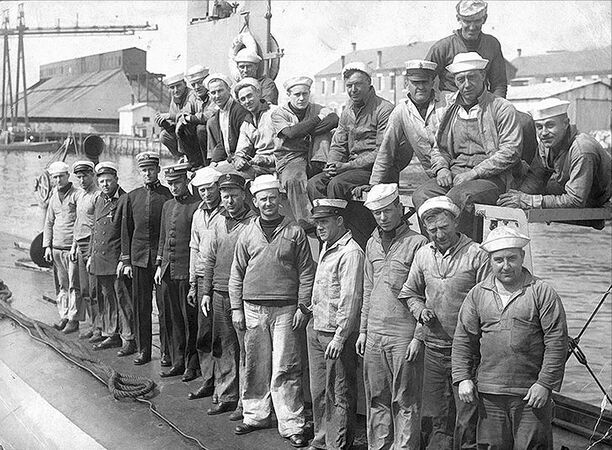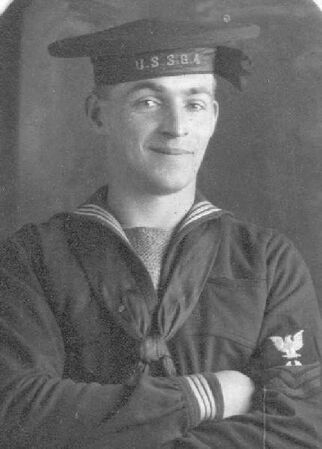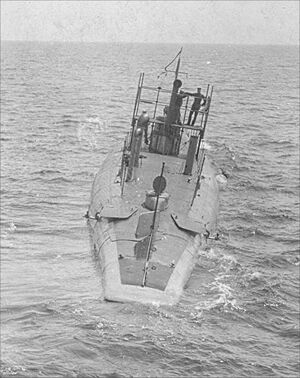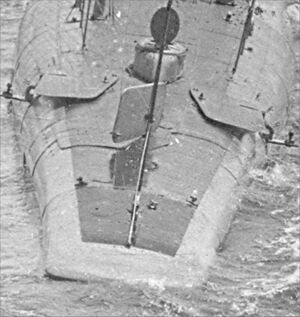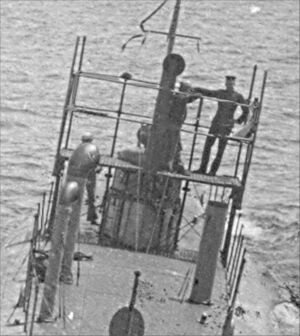G-4: Difference between revisions
Pbc captain (talk | contribs) No edit summary |
Pbc captain (talk | contribs) No edit summary |
||
| Line 16: | Line 16: | ||
File:G4-g4launch31-05.jpg|<big>The stern of the submarine is becoming buoyant and starting to roll the sub to port. You can see the shipyard workers on deck moving and leaning to the starboard side in a reflex motion to the roll.</big> | File:G4-g4launch31-05.jpg|<big>The stern of the submarine is becoming buoyant and starting to roll the sub to port. You can see the shipyard workers on deck moving and leaning to the starboard side in a reflex motion to the roll.</big> | ||
File:G4-g4launch32-06.jpg|<big>Now the stern is lifting off the cradle and water pressure is rolling her more to her to port side. The shipyard workers on deck are diving and scrambling to avoid being tossed into the water as she begins to float free of the building cradle.</big> | File:G4-g4launch32-06.jpg|<big>Now the stern is lifting off the cradle and water pressure is rolling her more to her to port side. The shipyard workers on deck are diving and scrambling to avoid being tossed into the water as she begins to float free of the building cradle.</big> | ||
</gallery> | |||
---- | |||
<gallery mode=packed widths=400 heights=300> | |||
File:G4-g4crew1917-14.jpg|Ship's officers and crew posed on deck, 1917. She was then operating out of the U.S. Naval Submarine Base, New London, at Groton, Connecticut. The two officers (4th & 5th from left, front row) are Lieutenant (Junior Grade) Paul F. Foster (Commanding Officer) and Lieutenant (Junior Grade) William F. Callaway (Executive Officer). | |||
File:G4-g4workers10301912-08.jpg|A few of the workmen from the Cramp Ship Yard that built the USS G-4. Seen are yard officials, shop and department supervisors and the craftsmen who were putting the G-4 together. Commissioning was still 14 months away. | |||
File:G4-g4a-17.jpg|Unknown sailor off the USS G-4. Time unknown. He appears to be a MM or MoMM/1c. | |||
</gallery> | </gallery> | ||
---- | ---- | ||
<center> | <center> | ||
<gallery caption="USS G-4 (ex-Thrasher)SS 26 at sea pre WW I." widths="300px" heights="500 | <gallery mode=slideshow caption="USS G-4 (ex-Thrasher)SS 26 at sea pre WW I." widths="300px" heights="500"> | ||
File:G4-g4atsea-11.jpg|USS G-4 (ex-Thrasher)SS 26 at sea pre WW I. The position of the upper rudder says that the submarine is making a port turn explaining the list the sub is showing. | File:G4-g4atsea-11.jpg|USS G-4 (ex-Thrasher)SS 26 at sea pre WW I. The position of the upper rudder says that the submarine is making a port turn explaining the list the sub is showing. | ||
File:G4-g4atsea2-12.jpg|USS G-4 (ex-Thrasher)SS 26 detail. Seen are upper rudder and the stern planes. Like the bow planes the stern planes could be rigged in when not in use. When diving they could be folded out and seated on trailer hitch looking pegs on the rotating arms to move the planes up or down. | File:G4-g4atsea2-12.jpg|USS G-4 (ex-Thrasher)SS 26 detail. Seen are upper rudder and the stern planes. Like the bow planes the stern planes could be rigged in when not in use. When diving they could be folded out and seated on trailer hitch looking pegs on the rotating arms to move the planes up or down. | ||
| Line 25: | Line 31: | ||
</gallery> | </gallery> | ||
</center> | </center> | ||
---- | |||
[[File:Crew-enspaulwfoster-001.jpg|thumb|400px|Ensign Paul F. Foster, USN Photographed circa 1914. Foster was awarded the Medal of Honor for his actions at Vera Cruz, Mexico, on 21-22 April 1914.]] | |||
Right: Paul Frederick Foster was born on March 25, 1889 in Wichita, Kansas. He received a senatorial appointment from the State of Idaho to the U.S. Naval Academy. Following graduation in 1911, he served in the armored cruiser Washington and the battleship Utah as a midshipman and, in March 1912, was commissioned as an Ensign. On 21-22 April 1914, Foster participated at the intervention at Vera Cruz, Mexico, leading his landing company with skill and courage. For his "distinguished conduct in battle", he was awarded the Medal of Honor. | |||
After submarine instruction on board USS Prairie, he reported on board USS G-4. In March 1915, Foster was promoted to Lieutenant Junior Grade and, in early 1916, was placed in command of G-4. | |||
Relocating to Ireland in December 1917, he was assigned to the submarine tender Bushnell in Bantry Bay, Ireland. Foster was temporarily promoted to Lieutenant in May 1918. While serving in Irish waters, he took command of the submarine L-2. Lieutenant Foster was awarded the Distinguished Service Medal for his role in the sinking of the German submarine UB-65 off the Irish coast on 10 July 1918. | |||
Below: Ship's officers standing beside their submarine, at the U.S. Naval Submarine Base, New London, Groton, Connecticut, in 1917. They are Lieutenant (Junior Grade) William F. Callaway (Executive Officer), at left, and Lieutenant (Junior Grade) Paul F. Foster (Commanding Officer). | |||
[[File:G4- | [[File:G4-g4foster-15.jpg|left|thumb|300px]] | ||
Revision as of 01:12, 14 March 2023

The USS G-4, date circa 1912, at the Cramp yard during her 'fitting out' period. A good top view of some of her more unusual features. The bow planes lay flat on the fore deck. They fold out and down an lock on to an axle that then rotates the planes to dive and rise positions. Hard to see at the stern, the stern planes operate like the bow planes and are partly extended. The port plane can be seen as a square shape just forward of the 'doghouse' on the stern. The starboard plane is actually seen edge on but its reflection can be seen in the water and you can seen its square shape there. In the fully extended position the both sets of planes would be flat to the water. Cramp yard slipways can be seen in the background.

-
Ship's officers and crew posed on deck, 1917. She was then operating out of the U.S. Naval Submarine Base, New London, at Groton, Connecticut. The two officers (4th & 5th from left, front row) are Lieutenant (Junior Grade) Paul F. Foster (Commanding Officer) and Lieutenant (Junior Grade) William F. Callaway (Executive Officer).
-
A few of the workmen from the Cramp Ship Yard that built the USS G-4. Seen are yard officials, shop and department supervisors and the craftsmen who were putting the G-4 together. Commissioning was still 14 months away.
-
Unknown sailor off the USS G-4. Time unknown. He appears to be a MM or MoMM/1c.
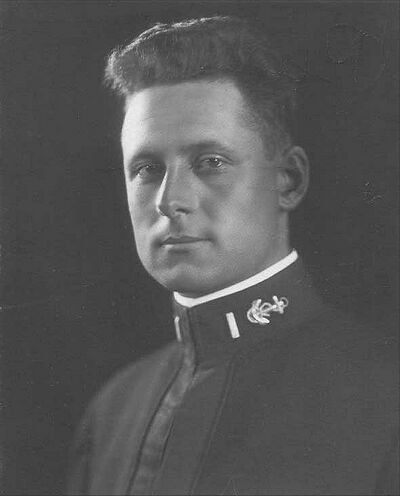
Right: Paul Frederick Foster was born on March 25, 1889 in Wichita, Kansas. He received a senatorial appointment from the State of Idaho to the U.S. Naval Academy. Following graduation in 1911, he served in the armored cruiser Washington and the battleship Utah as a midshipman and, in March 1912, was commissioned as an Ensign. On 21-22 April 1914, Foster participated at the intervention at Vera Cruz, Mexico, leading his landing company with skill and courage. For his "distinguished conduct in battle", he was awarded the Medal of Honor.
After submarine instruction on board USS Prairie, he reported on board USS G-4. In March 1915, Foster was promoted to Lieutenant Junior Grade and, in early 1916, was placed in command of G-4.
Relocating to Ireland in December 1917, he was assigned to the submarine tender Bushnell in Bantry Bay, Ireland. Foster was temporarily promoted to Lieutenant in May 1918. While serving in Irish waters, he took command of the submarine L-2. Lieutenant Foster was awarded the Distinguished Service Medal for his role in the sinking of the German submarine UB-65 off the Irish coast on 10 July 1918.
Below: Ship's officers standing beside their submarine, at the U.S. Naval Submarine Base, New London, Groton, Connecticut, in 1917. They are Lieutenant (Junior Grade) William F. Callaway (Executive Officer), at left, and Lieutenant (Junior Grade) Paul F. Foster (Commanding Officer).




